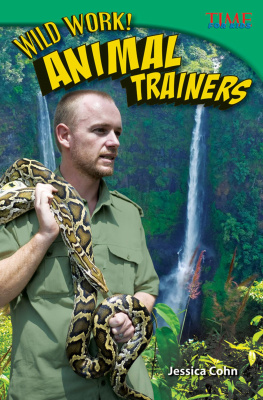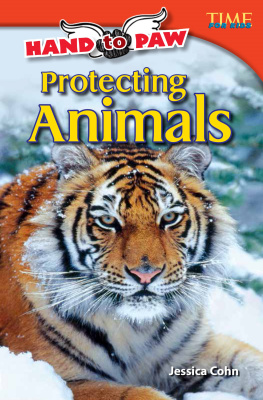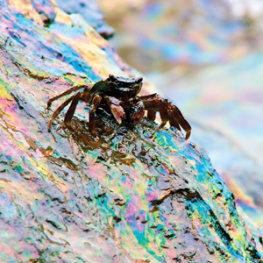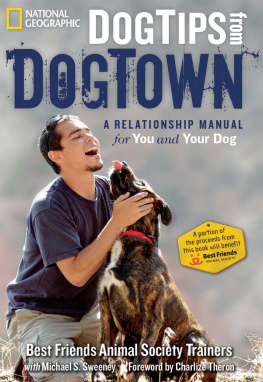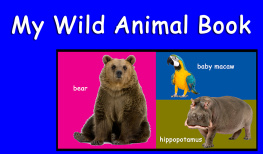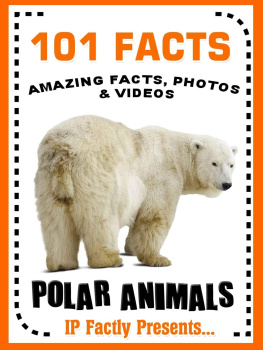
Jessica Cohn


Consultants
Timothy Rasinski, Ph.D.
Kent State University
Lori Oczkus
Literacy Consultant
Thorsten Pape
Animal Trainer
Based on writing from
TIME For Kids. TIME For Kids and the TIME
For Kids logo are registered trademarks of
TIME Inc. Used under license.
Publishing Credits
Dona Herweck Rice , Editor-in-Chief
Lee Aucoin , Creative Director
Jamey Acosta , Senior Editor
Heidi Fiedler , Editor
Lexa Hoang , Designer
Stephanie Reid , Photo Editor
Sandy Phan , Contributing Author
Rachelle Cracchiolo , M.S.Ed., Publisher
Image Credits: p.61 AGE fotostock;
pp.1819, 19, 35, 36 Associated Press; p.24
Circus World/Ringling Bros. and Barnum
& Bailey; pp.2425 William Woodcock
Collection; pp.3031 Christopher Schulz
Collection; pp.30, 4040, 57 Getty Images;
p.46 ChinFotoPress/Newscom; p.52
Visual&Written/Newscom; p.40 EPA/
Newscom; p.29 imagebroker/Raimund
Kutter/Newscom; pp.4849 Zuma Press/
Newscom; pp.2829 action press/Newscom;
pp.5051 (illustrations) Timothy J. Bradley;
pp.3233 (illustrations) J.J. Rudisill; pp.47,
49 U.S. Navy; pp.44, 4445 WENN.com; All
other images from Shutterstock.
Teacher Created Materials
5301 Oceanus Drive
Huntington Beach, CA 92649-1030
http://www.tcmpub.com
ISBN 978-1-4333-4942-3
2013 Teacher Created Materials, Inc.
Teacher Created Materials
5301 Oceanus Drive
Huntington Beach, CA 92649-1030
http://www.tcmpub.com
2013 Teacher Created Materials, Inc.
Synched Read-Along Version by:
Triangle Interactive LLC
PO Box 573
Prior Lake, MN 55372
ISBN-13: 978-1-68444-992-7 (e-book)

Amazing Feats .................
The Elephant in the Room .......
Big Cats .....................
Its a Bear ....................
In the Water ..................
Risks and Rewards .............
Glossary .....................
Index .......................
Bibliography .................
More to Explore ...............
About the Author ..............
TABLE
OF
CONTENTS

AMAZING
FEATS
Animal trainers train animals to perform. They
also teach animals such as guide dogs how to help
people. Getting animals to respond to people is
always at the heart of their work. Animal trainers
take care of animals and understand animal
psychology . They form close bonds with the
animals they train. But the best trainers never
forget that the animals they work with are wild
creatures. They are always aware of the dangers
of their job.
An elephant follows a trainers
directions to paint.

Why would someone want to
become an animal trainer?
What
techniques do trainers
use to influence an animals
behavior?
How does someone
prepare to
become an animal trainer?

Creatures of Habit
Animals learn in two different ways. To
understand the first way, think about a man that often
orders pizza. When the doorbell rings, the mans
dog starts drooling. Why? The dog has come to
associate the bell with pizza. Drooling when the
doorbell rings is a response beyond its control. This
is an example of classical conditioning .
The man pays the delivery person and begins
eating a slice of pizza. His dog jumps up and puts its
paws on the table, whining and begging. The man
tells it to sit. The dog sits quietly and earns a bite of
crust. This is an outcome of operant conditioning .
It is behavior the dog can learn and control .
To the Dogs
Ivan Pavlov was a famous researcher. He gave his
dogs food and measured how much drool they
made . Next , he began ringing a bell before feeding
them . Eventually , the dogs drooled when hearing
the bell , food or no food.

Favorite Treats
Different animals like different rewards.
Here are a few to try with your pets .
U back scratches food
U ice cubes playtime
U games brushing

Think Like a Trainer
Training any animal follows a pattern of stimulus,
response, and reinforcement . The stimulus is a word
or signal. The response is the desired behavior . The
reinforcement is when the trainer lets the animal know
that he or she recognizes the behavior. Trainers also use
reinforcement to stop bad behaviors . They create a link
between a behavior and a reward or a punishment .
Positive Reinforcement
Negative Reinforcement
Behavior : The animal
does something bad .
Stimulus : The trainer
gives the animal a signal.

What does positive mean
in this chart ?
What does negative mean
in this chart ?
Do you think animals
respond better to
rewards or punishments ?
Reinforcement: The trainer
takes away something good or
stops doing something fun .
Response : The animal stops
the bad behavior .
Response : The animal does
something good .
Reinforcement: The trainer starts a
fun activity or gives the animal a treat .

